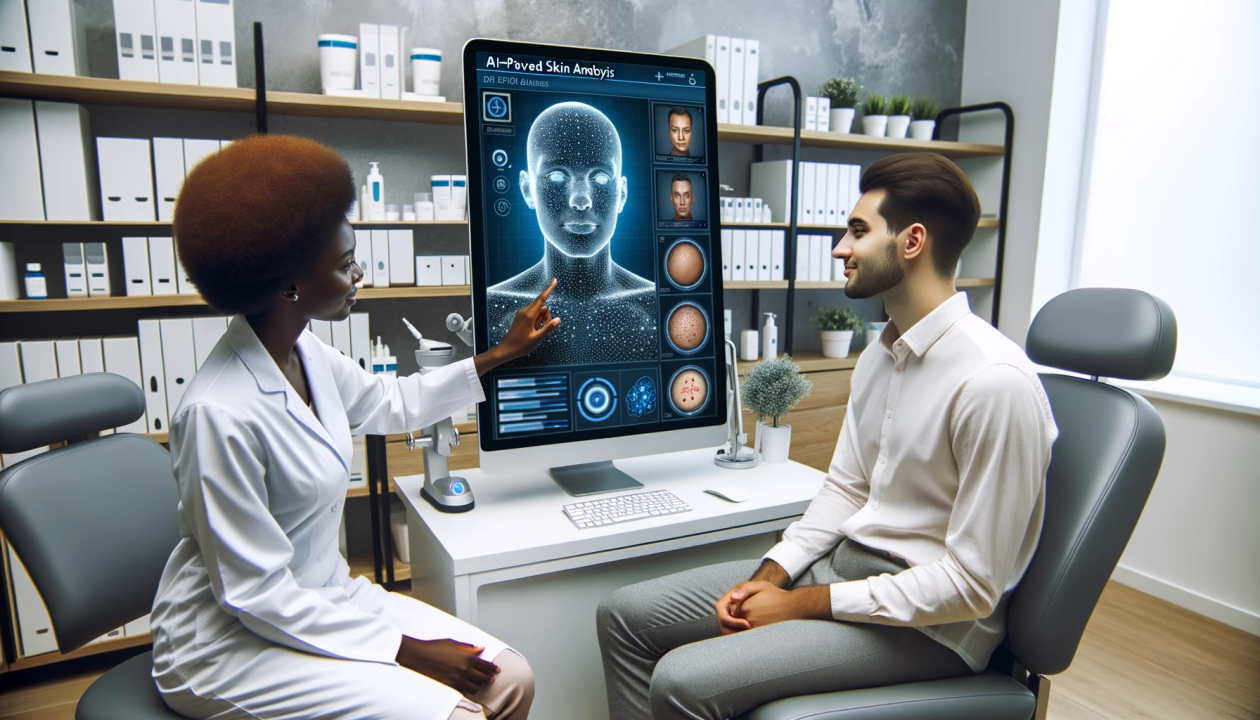In the fast-evolving world of medicine, dermatology is experiencing a groundbreaking transformation thanks to the fusion of technology and skin care. Artificial Intelligence (AI) and advanced diagnostic tools are reshaping how skin conditions are detected, diagnosed, and treated. This tech-driven revolution is not only improving patient outcomes but also enhancing the efficiency and accuracy of dermatological care.
The Dawn of AI in Dermatology
Artificial Intelligence is no longer a futuristic concept; it’s actively changing dermatology practices worldwide. By leveraging machine learning algorithms, AI can analyze thousands of skin images to detect patterns that even trained eyes might miss. This capability makes AI an invaluable assistant in diagnosing conditions such as melanoma, eczema, psoriasis, and acne with remarkable precision.
AI-Powered Skin Analysis
One of the most popular applications is AI-powered skin analysis. These systems use high-resolution images and deep learning models to evaluate skin texture, pigmentation, and lesions. Apps and devices equipped with AI allow patients to perform self-examinations at home, providing preliminary assessments and prompting timely medical consultations when needed.
Advanced Diagnostics: Beyond the Naked Eye
Traditional dermatological examinations rely heavily on visual inspection, sometimes supported by biopsies or lab tests. However, advanced diagnostics now offer non-invasive and highly accurate alternatives:
1. Dermatoscopy with AI Integration
Dermatoscopy, a technique involving a specialized magnifying device to examine skin lesions, has been enhanced with AI. By feeding dermatoscopic images into AI models, dermatologists can rapidly differentiate between benign and malignant lesions, speeding up diagnosis and improving early detection of skin cancers.
2. 3D Imaging and Mapping
3D imaging technology creates detailed maps of the skin’s surface, enabling dermatologists to monitor changes in moles or lesions over time. When combined with AI, this technology can predict which areas are at risk and require closer attention, thus personalizing patient care.
3. Molecular and Genetic Diagnostics
Cutting-edge molecular diagnostics analyze skin biopsies at a genetic level to uncover the root causes of complex conditions. This approach allows for targeted treatments tailored to a patient’s unique genetic makeup, paving the way for personalized dermatology.
Benefits of AI and Advanced Diagnostics in Dermatology
- Early Detection and Prevention: AI’s accuracy in spotting early signs of skin cancer and other diseases increases survival rates and reduces treatment costs.
- Improved Patient Experience: Non-invasive diagnostic tools reduce the need for painful biopsies and frequent clinic visits.
- Enhanced Diagnostic Accuracy: AI algorithms minimize human error and provide second opinions, increasing diagnostic confidence.
- Personalized Treatments: Genetic insights and advanced imaging allow for treatments tailored specifically to individual patients.
- Accessibility: AI-powered apps and devices make dermatological care more accessible, especially in remote or underserved areas.
Real-World Applications and Success Stories
Hospitals and clinics worldwide are adopting AI-driven tools with impressive results. For example, Google Health’s AI model demonstrated an accuracy level comparable to expert dermatologists in detecting skin cancer. Similarly, startups are developing smartphone apps that help millions monitor their skin health daily.
Challenges and Ethical Considerations
While promising, AI and advanced diagnostics also bring challenges:
- Data Privacy: Handling sensitive patient images and genetic information requires robust security measures.
- Algorithm Bias: AI trained on limited datasets may perform poorly across diverse populations, necessitating inclusive data collection.
- Clinical Integration: Seamless incorporation of AI tools into routine practice requires training and adaptation.
The Future of Dermatology: What’s Next?
The future is bright for tech-enhanced dermatology. Researchers are exploring AI-driven robotic surgery for skin lesions, real-time monitoring wearables, and AI-guided personalized skincare regimens. As AI and diagnostics continue to evolve, patients can expect more accurate, convenient, and effective dermatological care.
Conclusion
The marriage of AI and advanced diagnostics with dermatology is revolutionizing skin care today. This innovative blend is transforming diagnosis, treatment, and patient empowerment—ushering in a new era where technology meets skin health for better outcomes. Whether it’s early skin cancer detection or personalized treatment plans, the future of dermatology is smarter, faster, and more accessible than ever before.


Leave a Reply